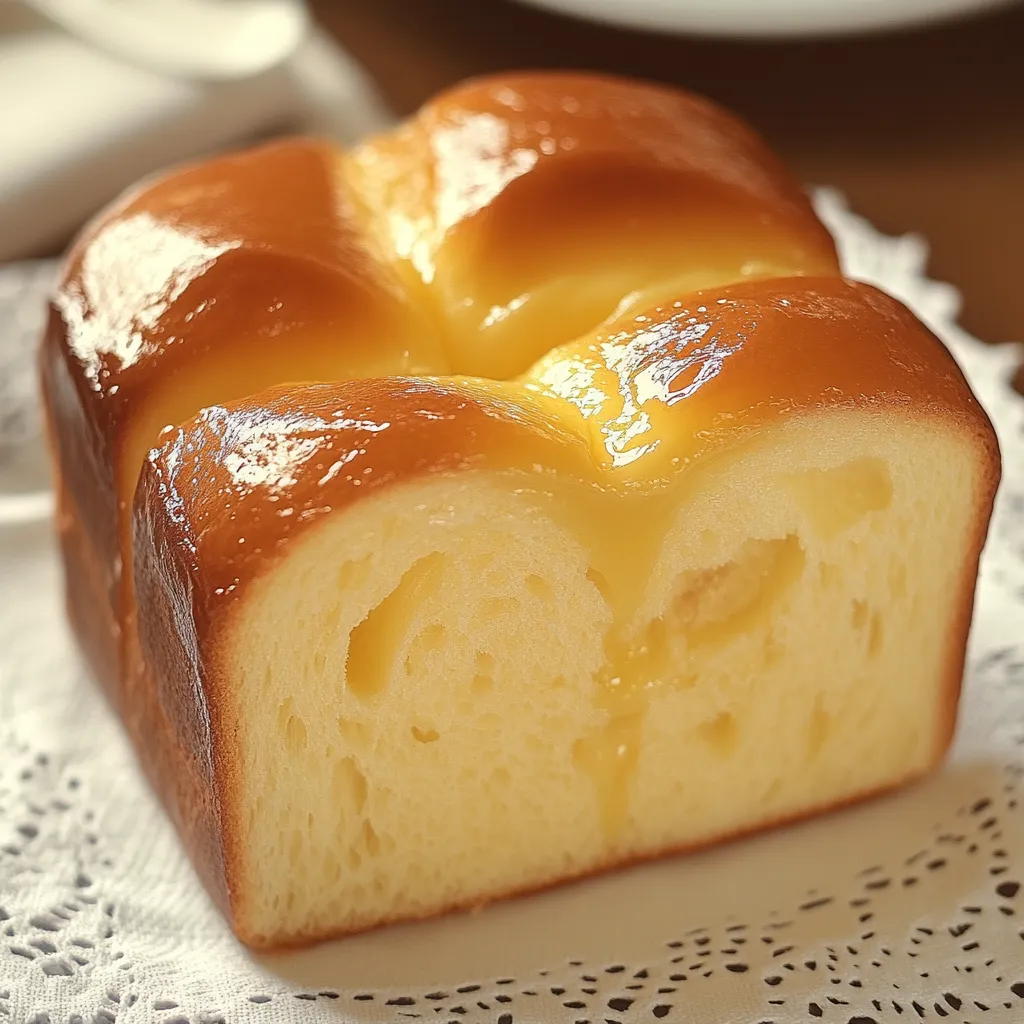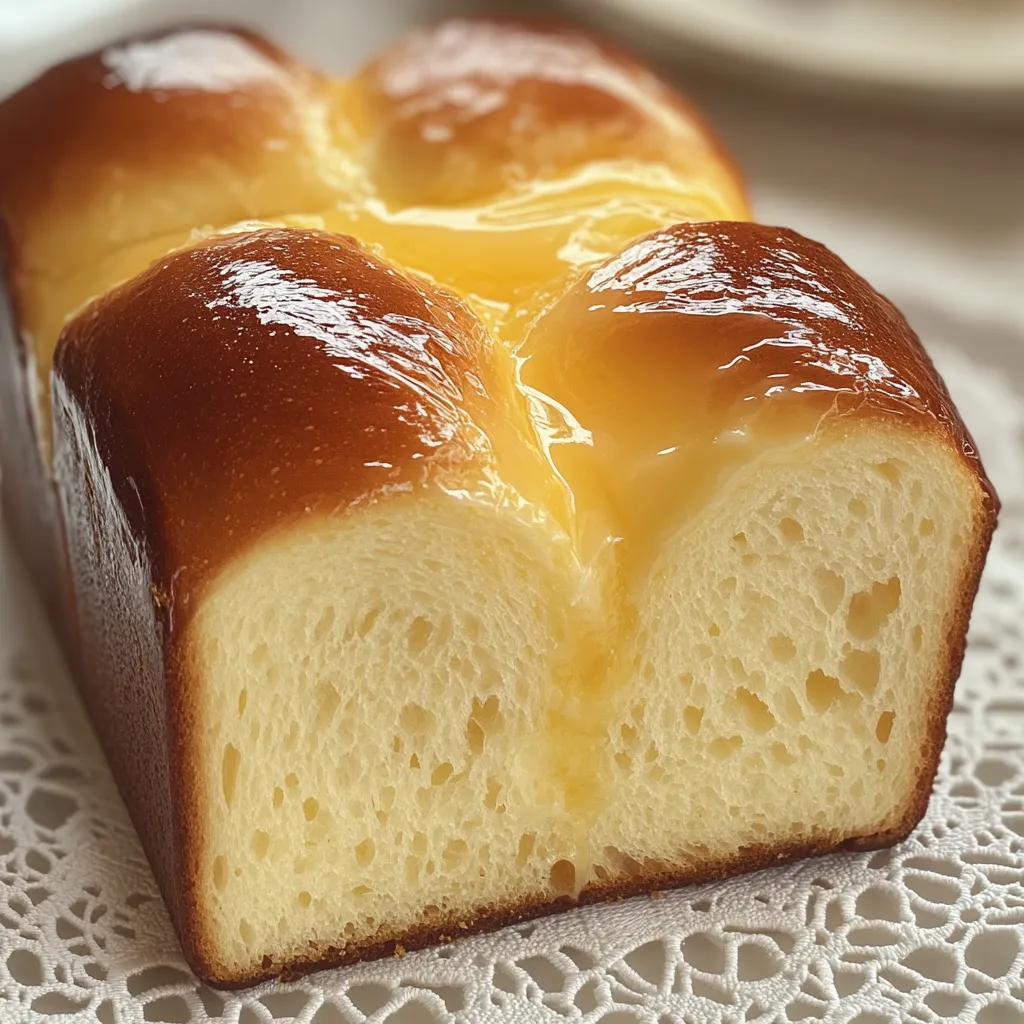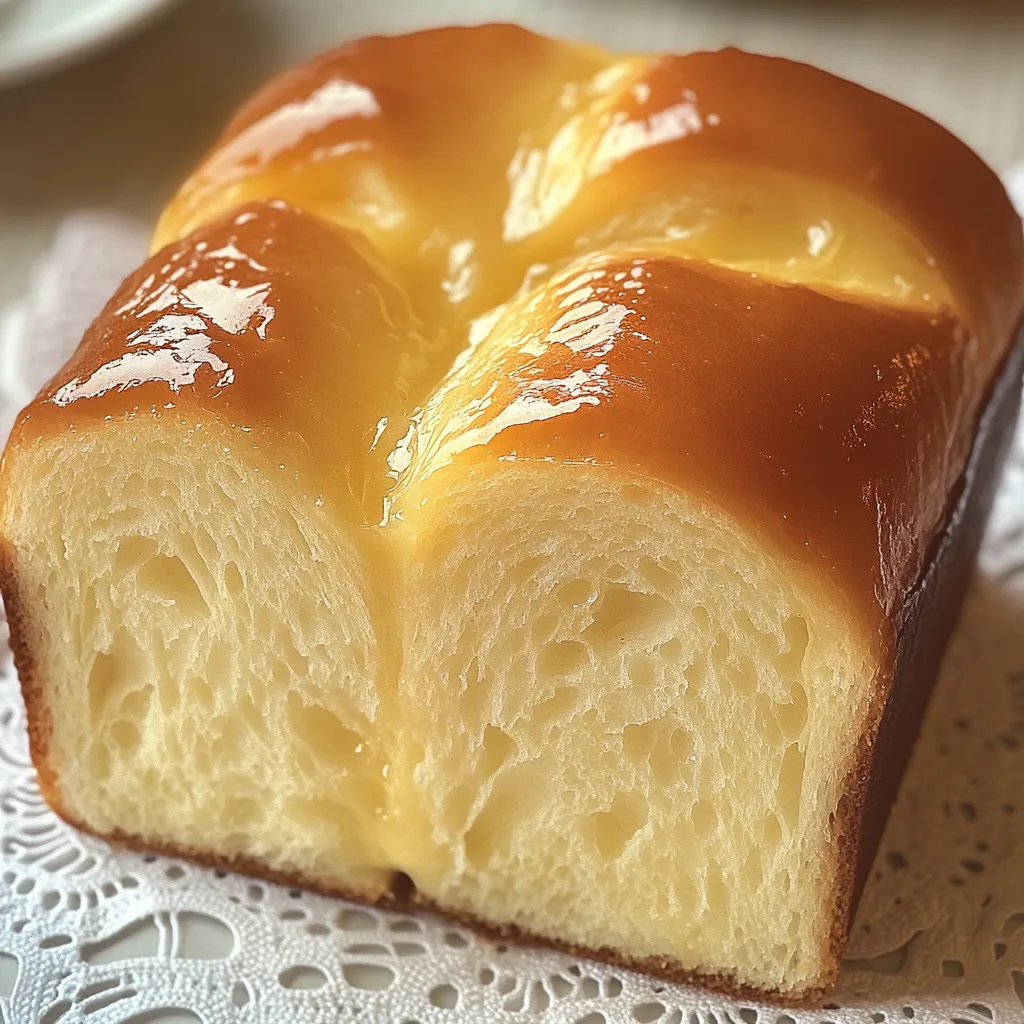 Pin
Pin
This enriched milk bread creates an irresistibly soft and tender loaf with a delicate sweetness from condensed milk. The simple combination of pantry ingredients yields a professional-quality bread with a pillowy texture that stays fresh for days. The finished loaf offers versatility for both sweet and savory uses while filling your kitchen with an enticing, fresh-baked aroma.
The first time making this bread revealed how a few quality ingredients could produce something truly special. The heavenly smell of baking bread drew everyone to the kitchen, eagerly awaiting that first warm slice.
Essential Ingredients
- All-purpose flour: Provides structure while maintaining tenderness; spoon into measuring cups and level off
- Active dry yeast: Creates proper rise and flavor development; verify freshness before using
- Sweetened condensed milk: Key ingredient for unique texture and gentle sweetness
- Unsalted butter: Contributes richness and tender crumb structure
- Warm water: Temperature between 105-115°F activates yeast properly
- Salt: Balances flavors and regulates yeast activity
Essential Steps
- Activate Yeast:
- Mix warm water with yeast and sugar until foamy and activated
- Combine Wet Ingredients:
- Mix condensed milk, milk and butter until smooth
- Form Dough:
- Add flour gradually to create a smooth, elastic texture
- Initial Rise:
- Let dough double in size in a warm spot
- Shape Loaf:
- Deflate gently and form into pan for final rise
- Bake to Perfection:
- Brush with egg wash and bake until golden
 Pin
Pin
This recipe has become a cherished weekend tradition. The hands-on process of kneading brings families together, creating both delicious bread and lasting memories.
Morning Serving Ideas
Elevate breakfast with thick slices topped with melted honey butter or seasonal preserves. For special occasions, prepare decadent French toast using vanilla-infused custard and fresh fruit toppings.
Sweet Additions
Experiment with vanilla extract in the dough or swirl in cinnamon sugar before shaping. Special occasions call for simple glaze drizzles or crumbly streusel toppings.
Storage Guidelines
Store in an airtight container at room temperature up to three days. For extended freshness, slice before freezing and store up to two months, thawing individual portions as needed.
Through countless batches of bread baking, this recipe consistently produces exceptional results. Its perfect balance makes it suitable for daily meals and special occasions alike.
Temperature Control
Proper temperature management ensures success. Water should feel comfortably warm. Keep ingredients at room temperature for optimal mixing. During cold weather, create warmth by placing dough near indirect heat sources or in an oven with only the light on.
Budget Benefits
Making this bread at home costs less than buying specialty loaves while delivering superior quality. Basic ingredients purchased in bulk increase savings, and shelf-stable condensed milk enables spontaneous baking.
Mixing Method
Proper mixing technique ensures success. Thoroughly combine wet ingredients before gradually adding flour. Watch for dough pulling away from bowl sides, indicating ideal consistency. This method prevents dry spots and distributes ingredients evenly.
Serving Suggestions
This versatile bread adapts to many presentations. Shape into individual rolls before final rise, create braided loaves for visual appeal, or use for unique sandwich combinations like prosciutto with fig spread or herb-seasoned chicken salad.
Seasonal Variations
Adjust flavors with the seasons. Add citrus zest for summer brightness, warming spices in fall, dried fruits for winter holidays, and fresh herbs during spring. The base recipe welcomes creative adaptations while maintaining its signature texture.
Years of baking confirm this bread's exceptional adaptability. It transitions seamlessly from casual breakfasts to formal dinners, while maintaining its characteristic softness. The aroma of baking and resulting loaf create lasting kitchen memories.
 Pin
Pin
Common Recipe Questions
- → Is it possible to make this bread without a stand mixer?
- Absolutely. You can knead the dough manually for about 8-10 minutes. Keep working it until it turns smooth and stretchy—it’ll just take some arm strength!
- → How can I tell if the bread is fully baked?
- You’ll know it’s ready once the top is beautifully golden and it gives a hollow sound when you tap it. This generally takes 20-25 minutes at 350°F.
- → Can I prep the dough a day ahead?
- Sure! Let the dough rise slowly in the fridge overnight. Just allow it to warm up to room temperature before you shape it and pop it in the oven.
- → Why didn’t my dough rise?
- Double-check that your yeast isn’t expired and that the milk wasn’t overheated. Milk should be warm but not hot—about 110°F is just right.
- → How do I store any extra bread?
- Put leftover bread in a sealed container at room temperature for up to 3 days. Or freeze it—keeps fresh for as long as 3 months!
